August 2008
![]() The
ETF Strategist: Balancing Risk And Reward For Superior Returns
The
ETF Strategist: Balancing Risk And Reward For Superior Returns
![]() Full
Of Bull: Do What Wall Street Does, Not What It Says, To Make Money in the
Market
Full
Of Bull: Do What Wall Street Does, Not What It Says, To Make Money in the
Market
![]() The
Intelligent Portfolio: Practical Wisdom On Personal Investing From Financial
Engines
The
Intelligent Portfolio: Practical Wisdom On Personal Investing From Financial
Engines
![]() Sell
& Sell Short
Sell
& Sell Short
![]() Study
Guide For Sell & Sell Short
Study
Guide For Sell & Sell Short
![]() Smarter
Investing In Any Economy: The Definitive Guide To Relative Strength Investing
Smarter
Investing In Any Economy: The Definitive Guide To Relative Strength Investing
![]() Technical
Analysis Using Multiple Timeframes
Technical
Analysis Using Multiple Timeframes
![]() Value
In Time: Better Trading Through Effective Volume
Value
In Time: Better Trading Through Effective Volume
or return to August 2008 Contents
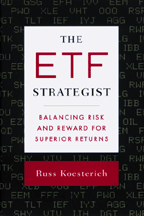 |
Of the many new financial instruments available over the past quarter century, exchange traded funds (ETFs) are neither the most exotic nor recent. But they are becoming the most popular. ETFs are a good way to diversify risk, target specific sectors or countries, and maintain a specific asset allocation. This book highlights the advantages of ETFs and examines their different uses, and it goes further than their mere mechanics, regulation, and characteristics. It is a must-have book for investment advisors and serious investors interested in getting started in with ETFs or in using them more effectively. www.penguin.com |
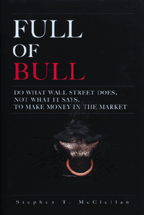 |
What are stock market analysts really saying? How do you read between the lines, put their research to work, and actually make money? Read this guide to discover how to do what Wall Street does, not what it says. Drawing on the Street's experience analyzing top companies, the author shows how to do your own research, evaluate a company's prospects, and choose investments based on core principles that work. Full Of Bull offers objective, focused guidance you should be getting from your broker -- but aren't. www.FTPress.com |
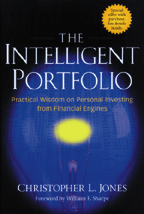 |
The key to good investment decisions is making informed choices. This book shows you how. Written with the thoughtful investor in mind, it reveals the time-tested institutional investing techniques that individuals can use to help improve their investment performance. The information here uses state-of-the-art simulation and optimization methods to demonstrate the often-surprising results of applying modern financial economics to personal investment decisions. With this guide you'll discover how you can effectively implement the strategies that institutional investors have known for decades. www.wiley.com |
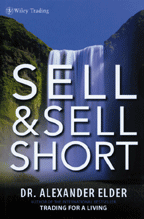 |
Selling is the hard part of trading. If the stock we buy rises, when do we take profits? If our stock falls, when do we exit? Beginners and amateurs invest most of their time in looking for new trades. They assume that if they get the entry right, the trade will take care of itself. Good trading means taking reasonable profits and limiting losses. A mature trader knows when to exit. Elder explains how to set profit targets and stop-losses. As stocks go down as well as up, those who only go long could be losing half of their profit opportunities. Shorting is a favorite game of the pros, and stocks often fall twice as fast as they go up. Being comfortable with selling and selling short allows you to wrestle the market with both feet on the ground. www.wiley.com |
This study guide contains 115 questions and answers, and 17 chart studies. Use with Sell & Sell Short to make the most of your time. www.wiley.com |
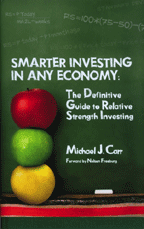 |
This book is about letting the little guys do what the big guys have always done. The big funds and institutions have always used relative strength to rack up big returns. Now, long-time private investor Carr has applied his professional expertise to investing. Following his methodologies strictly could double the returns of the S&P 500 with less risk. This guide will show you how relative strength strategies allow you to invest successfully in both bull and bear markets. Recent advances in computing capability and the availability of ETFs have opened up relative strength strategies to nearly any investor. www.w-apublishing.com |
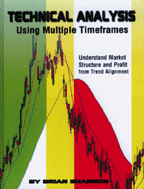 |
This is a guide to understanding market structure and the psychology of price movement. Subjects covered include how to enter established trends at low-risk, high-profit levels, how to recognize and profit from the cyclical flow of capital through all markets, estimating profit potential in a trade, correct stop placement for preservation of capital and maximization of winners, and more. Learning about brokerage firms' dirty tricks and hidden fees, along with learning to anticipate rather than react to price movement, are also helpful lessons. Lifevest, www.technicalanalysisbook.com |
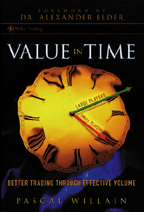 |
In 2001 the markets started measuring prices to the penny to make it easier for the public to understand. Some believe this encouraged price manipulation. To avoid being a victim of these manipulators, investors/traders must be able to detect their moves. This book provides new technical analysis tools that show you how to see through market manipulations and to become a better trader. Information leaks and price manipulations are routine in the markets, with the objective of taking advantage of others. Using the information in this book will enable an investor to trade ahead of the news. www.wiley.com |
Return to August 2008 Contents
Originally published in the August 2008 issue of Technical Analysis
of STOCKS & COMMODITIES magazine. All rights reserved. © Copyright
2008, Technical Analysis, Inc.